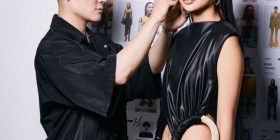The 4 Pillars of Sustainability : Profit
As established in previous discussions, the foundations of sustainability revolve around four key pillars. This blog post delves into the “profit” pillar, aiming to share valuable insights about the fashion industry’s dimensions and its various sectors. It explores how brands maintain competitiveness in times of economic uncertainty and how creative directors congregate the gap between creativity and commerce.
According to Statista’s 2023 Fashion eCommerce analysis, world-wide, fashion is the second largest industry for business-to-consumer eCommerce. Globally, its size was estimated at $768.7 billion in 2023. A total market size of US$1,103.3 billion is expected by 2027, growing at 9.45% per year.
Following an 18-month period of strong growth, the fashion industry is now suffering from high inflation and unhappy customers. There was a slowdown in growth in 2022 and it is expected to continue in 2023. Based on McKinsey’s analysis (McKinsey and Company 2022) the luxury fashion sector is predicted to perform well in areas such as the US and China. Due to currency rates and the energy crisis, Europe will not be able to achieve the same results. For the non-luxury fashion market, 2023 looks challenging. Sales growth is anticipated to be slow with figures as low as -2 and +3 percent. The market in Europe is expected to shrink between 1 and 4 percent. A growth rate of 2 to 7 percent is expected in China and the US. Inflation also affects these predictions and forecasts, which may lead to a more negative effect on the sector than originally thought.
As global uncertainties and risks increase, fashion industry leaders should closely monitor political factors in the regions where they manufacture and market their products. To navigate shifting conflicts, fiscal policies, and government regulations, they should have rapid risk management plans in place. When assessing both new and established foreign markets, it’s crucial for them to think critically about their geographical presence, going beyond just growth prospects. The influence of a globally interconnected and vocal customer base means that brands can no longer remain neutral on political issues (McKinsey and Company 2022).
As a creative director within a fashion house the role involves responsibility for defining the brand’s vision and establishing its marketing strategy. Beyond this creative responsibility, they must also generate revenue for the company. Despite creative talent, if figures don’t impress, the role will be swapped out for someone else (Mitterfellner. O, 2023). To bridge the gap between creativity and commerce, creative directors must collaborate within the value system despite the potential disparity. This collaborating is possible if different roles in the organization understand the pressures they face. Fashion executives must prioritize partnering with their consumers. Consumers bring their unique perspective on the connection between creativity and value for money through their purchase choices. (Crook. J, 2017).
Josh De Souza Crook, (2017), Compelling Fashion Business: Bridging The Divide Between Creative Vision And Commercial Reality, https://www.arts.ac.uk/colleges/london-college-of-fashion/stories/compelling-fashion-business-bridging-the-divide-between-creative-vision-and-commercial-reality, Accessed: 21/10/23
McKinsey & Company, (2022), The State of Fashion 2023: Holding onto growth as global clouds gather, https://www.mckinsey.com/industries/retail/our-insights/state-of-fashion, Accessed: 21/10/23
Statista, (2023), Fashion eCommerce: market data & analysis, https://www.statista.com/study/38340/ecommerce-report-fashion/, Accessed: 21/10/23
[Cover Image] Cuong Dam, Inflowing Backstage, Accessed; 21/10/23, Available: https://www.pinterest.co.uk/pin/24136547997240356/

khaled: Perfect